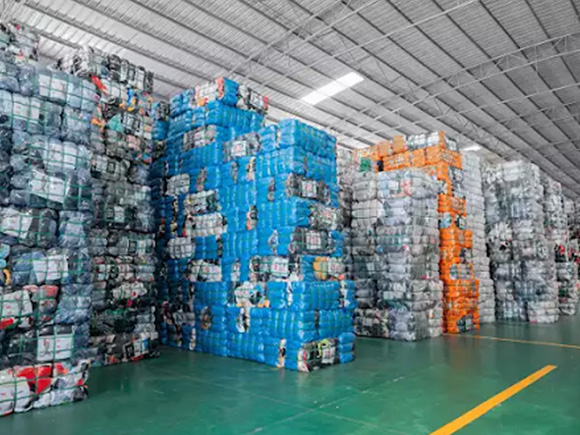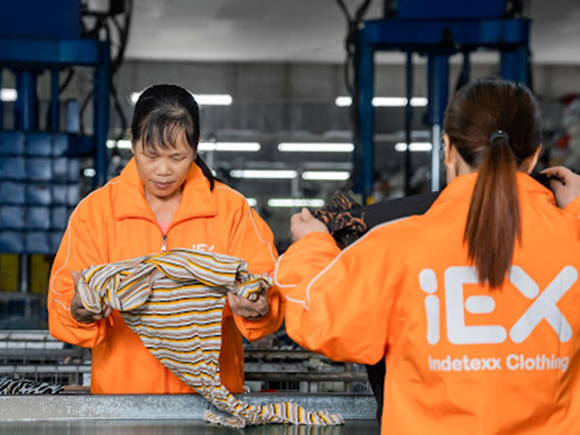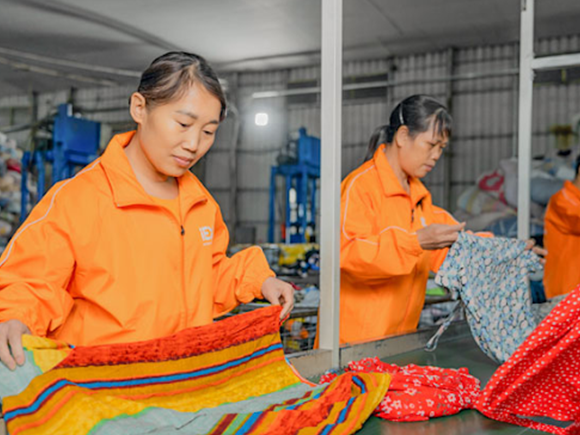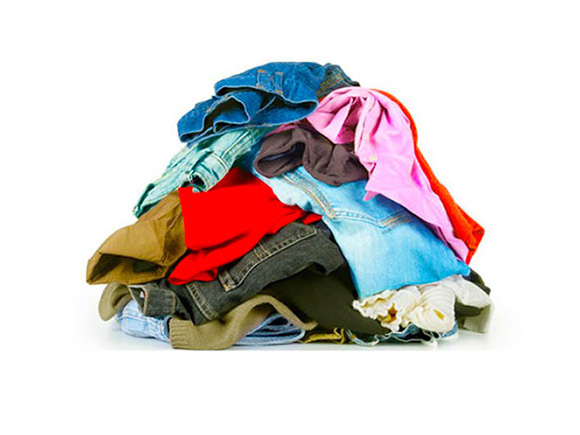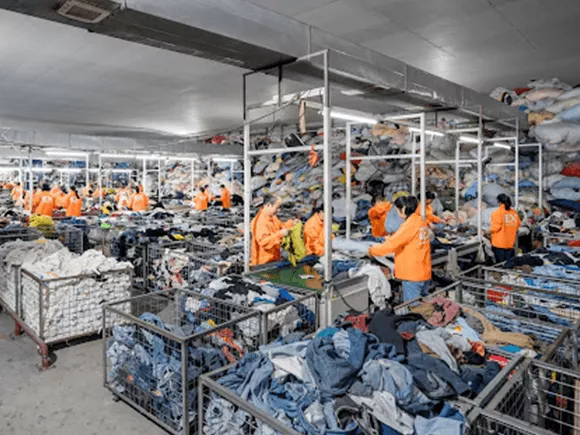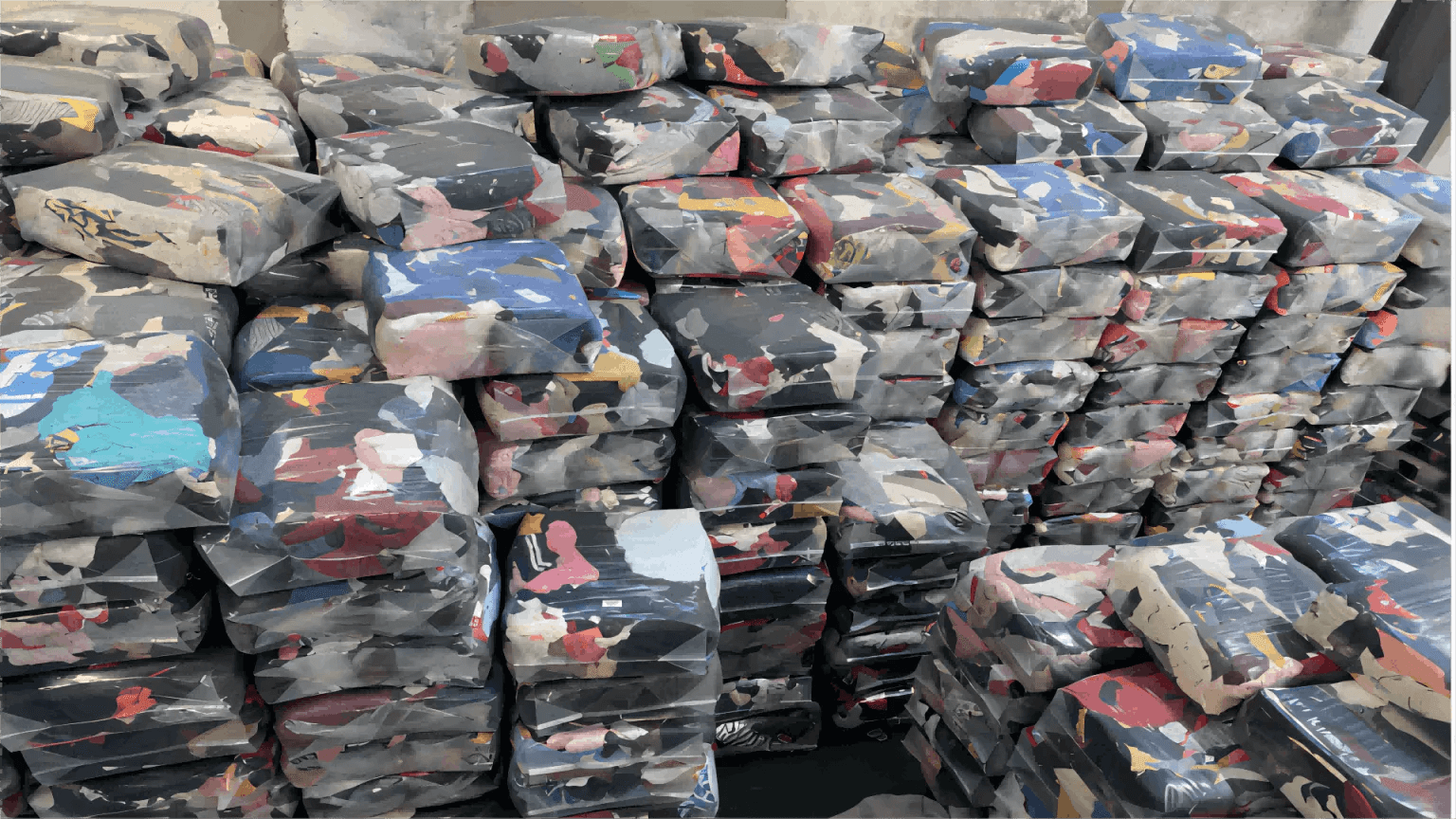The society we live in is one that is majorly of mass consumption. Between the years 2000 and 2015, did you know that the production of clothing more than doubled from around 50 billion tonnes to a little over 100 billion tonnes? The Global second-hand market is booming and has been tipped to reach a milestone value of $80 billion (double the value of the fast fashion market) in the coming years.
Fashion has grown beyond merely putting on the trendiest styled outfits, or chasing the most expensive brands out there. Right about now, global consumers of fashion items are bending towards second-hand clothes and there are many reasons to back their decisions.
Shopping for second-hand clothes is one of the easiest, yet, best things we can do to contribute to a greener earth. Making the big decision to start buying second-hand clothes is a very great start, however, deciding where to shop for second-hand wares is the ultimate.
The frequent demand for quality wearables from second-hand clothes suppliers have gotten to an all-time high and it’s clear that second hand clothing is fast becoming the average person’s first source of fashion. The wardrobe of the average second hand consumer is made up of 25% pre-owned clothing.
The Second-Hand Clothing Market -
A New Goldmine?
The global second-hand clothing market is experiencing what can be likened to the American gold rush of Nevada and more traders (wholesalers and retailers), as well as consumers are quickly tapping into this goldmine. One almost shocking fact is the growth which has enveloped the global second-hand clothing market which saw the sales of pre-owned clothes over the past three years grow to an astronomical 21 times than the mainstream retail clothing market.
Consumers worldwide are becoming more and more concerned about the environment in which they live. Not only that, people have become disenchanted with consumerism and in several cases have had their wallets fall under pressure.
These things have seemingly created a bigger market than ever for second-hand clothing around the world. These combined factors resulted in a boom for the preowned clothing market and this is further facilitated by second hand clothing dealers – Indetexx, one of the best wholesale second hand clothing suppliers in the world.
Data from several studies reveal that the second-hand market is growing at a much faster and astonishing rate than sustainable fashion.
Consumers are turning to the apparel reselling market even more, partly due to the emergence of wholesale second hand clothing suppliers who have made the second hand market easy to access from all parts of the world. Public acceptance of second-hand clothes has also gotten to a commendable height that the growth of the market is very astonishing.
Larger shares of the average clothing consumer’s wardrobe have been increasingly occupied by second-hand clothes. The US clothing market for example is predicted to be filled to 18% by second-hand clothing, this is fuelled by several trends which are playing a significant position in changing how people source for their clothes.
Driving Catalyst For The Growth of the Global Second-Hand Market
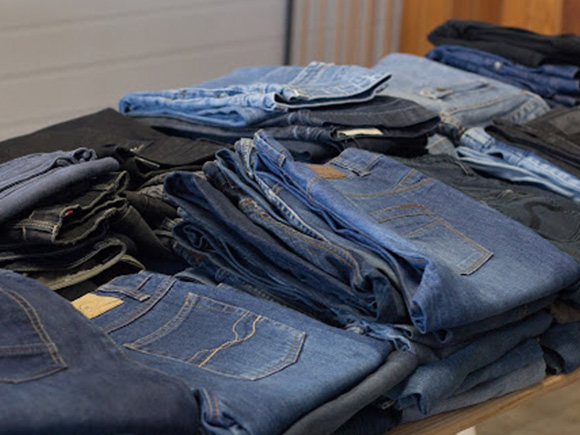
Source: Pixabay
A number of factors are responsible for the explosive growth of the global second-hand market. One of the major driving factors that are immensely contributing to this growth around the world is consumers’ desire for better value. While searching for better values, shoppers realize that patronizing the second-hand clothing market is the easiest way to get what they want.
The social stigma that was formerly associated with second-hand clothing seems to have drastically reduced to a large extent. 90% of Gen Z shoppers believe there is no stigma associated with buying used clothing at all. Almost 50% of shoppers that helped carry out a survey said that they intend to spend more money purchasing second-hand clothes over the coming few months.
More than ever before, fashion consumers have become even more concerned with sustainability, especially young shoppers. They are now more sensitive to the damage that the fashion industry is causing.
Some of the damages caused by most of these fast fashion manufacturers include their enormous water footprint, the notoriety of putting workers under poor working conditions, and the hazardous substances used to create colors. Consumers have become dedicated to making decisions related to fashion that will help mitigate these harms.
Finally, one other factor that has immensely contributed to the growth of the global second-hand market is the COVID-19 pandemic which had the whole world locked down at home for several months.
The economic redundancy and restriction of movement during this period made it that avid fashion shoppers had to adjust by looking for other ways to meet their clothing needs. The most feasible solution to this was online shopping, hence, people now had to make do with shopping for second-hand clothes via the internet.
The shift towards the second-hand clothing market makes a lot of difference to the world and this further encourages people to purchase more used clothing. According to reliable statistics, it was estimated that in 2022, 1.65 Pounds of C02e would be saved if everyone wore second-hand clothing to one wedding. Saving this amount of C02e is equivalent to 56 million cars being taken off the road for an entire day.
These days, everyone is jumping on the thrift clothing bandwagon as people have identified the second-hand clothing market as not only a source of getting quality clothes at a cheaper price but also as a means of earning good income; not as end consumers but as resellers.
For resellers and savvy fashion shoppers, there has been an increased level of interest in second hand clothing because of the higher quality that they offer. This way it can always be resold while still in its best condition. With this move, there is a significant reduction in the demand for cheap “fast fashion” clothing items which were shoddily constructed.
As the concern of consumers for the environmental impact of production, transportation, and industrial waste (water consumption, greenhouse gas emissions, and landfills) continues to increase, many of them are also increasing their second-hand clothing consumption in order to reduce their carbon footprint.
Market experts have projected that the second-hand clothing market could hit $64 billion globally within the next 5 years. With the traditional thrift sector also predicted to make up to $36 billion, analysts say that the global second-hand market will be tuned up to $80 billion by 2029, making it almost 200% of the value of the fast fashion industry which is worth $44 billion.
3 Factors That Will Further Accelerate the Growth of the Global Second-Hand Market
The Gen-Z Influence
Younger consumers, especially people between the ages of 16 and 23 are powering the second-hand clothing aesthetics trend. These Gen-Z shoppers are helping to drive the second-hand market growth by not only associating with it but also giving it a platform by showcasing vintage-inspired looks on social media.
According to ThredUP research, about 80% of consumers in this age gap believe that there is no stigma associated with rocking a second-hand clothing item. This study also discovered that 90% of Gen Z fashion consumers are more than willing to shop for second-hand clothing, a far cry from what the supposed older generations are willing to do.
Demand for More Sustainable Clothing
One of the major catalysts driving the growth of the global second hand clothing economy is the demand for more sustainable clothing. Due to several complications in the global ecosystem, a lot of people are now searching for more sustainable fashion options.
According to a fashion report made in 2019 by global fashion search platform, Lyst, more than ever before, people are searching for keywords that are closely related to sustainability.
Alongside some keywords like “preloved”, “recycled”, and “resale”, people also search for more specific organic and sustainable materials too and these searches are becoming more and more frequent. Keywords related to sustainable fashion have risen on average to about 75% yearly.
The Desire to Reduce the Global Footprints of Garments
Consumers have come to learn that wearing a cloth for just 9 months longer helps to reduce its footprint by 20%. It is fast becoming a common knowledge that by choosing to buy second-hand fashion items, we are not only helping ourselves but also helping the environment.
In a recent BBC report, increasing the lifespan of a garment for more than 9 months when it could have been discarded will reduce its environmental impacts to as low as 20-30%.
Active Second-hand Clothing Markets
For the years 2020 to 2029, it is expected that the size of the global second-hand clothing will have increased to 12.4% CAGR. From the $8.6 Billion it was in 2020, market analysts predict that it would have climbed up to, or even more than, $27.5 Billion.
The global second-hand clothing market is a very populated one with several established players who pattern key roles in the general movement of the market. The size of these active markets gives them a commanding say in the clothing resale industry. The second-hand clothing market uses a proprietary technology that requires years of extensive research and planning in order to be implemented efficiently.
Let us break down the active second-hand clothing markets in the world, each by their region. That is, Asia Pacific (APAC), Europe, the Middle East and Africa (MEA), North America, and South America.
- Asia Pacific (APAC): Countries include China, Singapore, South Korea, Japan, Malaysia, India, Australia, ASEAN nations, and the Rest of APAC
- Europe: Active second-hand clothing markets are located in countries like the United Kingdom, France, Germany, Croatia, Norway, Turkey, Italy, Ukraine, Spain, Poland, Russia, Georgia, and Estonia.
- Middle East and Africa (MEA): The Middle East’s active second-hand clothing market regions consist of countries such as the United Arab Emirate (UAE), Oman, Qatar, Saudi Arabia, Kuwait, Bahrain, etc. While on the African forefront, there are very active second-hand clothing markets in Nigeria, Ghana, Togo, Mali, Benin Republic, South Africa, Botswana, Zimbabwe, Mozambique, Kenya, Tanzania, and the rest of Africa.
- North America: This includes the United States, Mexico, Canada, Jamaica (and most of the Caribbean nations), Puerto Rico, Costa Rica, etc.
- South America: The South American continent is one of the biggest second-hand clothing markets in the world partly due to its size, population, and economic state. They include Brazil, Argentina, Ecuador, Chile, Colombia, Uruguay, and the rest of South America.
A Survey of Some of the Biggest Second-hand Clothing Markets in the World
The global second-hand clothing market has expanded to a very large extent due to the enlightenment of the consuming public of the benefits of buying used clothes.
The North American market is the biggest economy in the world for second-hand clothing, controlling 27% of the entire market while the other regions, Europe, Asia Pacific, Middle East and Africa take up the remaining 63% share of the market in that order.
North America is projected to experience a wider expansion in the second-hand clothing market over the next couple of years. One of the reasons for this projection is the region’s increasing demand for health and fitness tracking apparel which can be found in a large deposit in second-hand clothing markets.
Many European countries experienced a scourging economic slowdown in the past five years which resulted in an increase of activities in the second-hand clothing market of the region. Countries like Bulgaria, Denmark, and Switzerland reached their peak.
Also following the increased tension and conflict between Ukraine and Russia, several neighboring nations including Bulgaria have adopted the trading of second-hand clothing more.
Although Western Europe is slowly exiting its economic meltdown phase, Central and Eastern Europe have not been that lucky as economic conditions are yet to improve. Hungary, for example, is currently in a huge debt running to the tune of $100 Billion and this has somewhat been a catalyst to the nation’s local second clothing market which as of 2021 was worth over $56 Million.
Poland also for example is one of the fastest-growing second-hand clothing markets in the world with more than 40% of its total population saying they would rather shop for clothes at a second hand clothing store than patronize fast fashion
In Africa, the use of second-hand clothing is almost more popular than brand new clothes. Countries like Kenya, an East African nation, import more than 100,000 tonnes of second-hand clothing every year.
Sierra Leone also has a very impressive second-hand clothing market which is one of the most active on the continent. In Sierra Leone, 7 out of 10 people earn less than $2 in a day and this has about 60% of the population leaning towards the local second-hand clothing markets.
Apart from the fact that the second-hand clothing market in Africa is a major source of job creation in the region, it also helps the government to generate revenue from custom duty charges.
In recent years, a BCG poll was conducted in six countries on about 7,000 people in order to identify a recent market trend. This survey was fuelled by data from customers of Vestiaire collective. It revealed that a development in smart clothing R&D with regards to new, improved and enhanced technology in hand with an increased desire to improve self-care is one of the key drivers pushing the global clothing market onward.
It was predicted from this study that the global second-hand market will witness tremendous growth over the next 5 years. Already developed markets such as the North American second-hand clothing market will experience even bigger improvements and the developing ones such as the African market will become more stable.
For a clearer and closer context, below is an analysis of some of the biggest and most active second clothing markets across different regions.
USA
ThredUP published a report based on findings from Global data showing that fashion consumers in the United States now have picked up recent preferences for fashion choices that are considered more sustainable.
ThredUP’s report thereby confirms two earlier researches carried out in the last two years by Unibail-Rodamco-Westfield which shows that American consumers had become more sensitive to cleaner and eco-friendly products. The report states that 70% of shoppers wish that retailers would commit more to address environmental issues.
This preference for more sustainable products means that consumers of fashion apparel in the United States are now more interested in second-hand clothing. According to ThredUP, the US second-hand clothing which was at $36 billion in 2020, is likely to reach $77 billion over the next five years and can even go ahead to pull a shocker by crossing the $100 billion benchmark.
Kenya
Kenya is one of the biggest importers of second-hand clothing in Africa with over 8,000 containers of unsorted used clothing weighing about 185,000 metric tonnes imported in 2019 alone. This, therefore, makes it an appropriate example of how second-hand clothing markets can impact the economy.
On the 5th of March, 2021, Kenya’s Institute of Economic Affairs (IEA) released an extensive study that revealed that the second-hand clothing market of the country directly keeps over 2 million people in jobs. Indirectly, thousands of other people are employed through the second-hand market, such as people working in transportation.
The Kenyan Bureau of Statistics made a manpower survey which further showed that the average Kenyan earner spends almost 40% of their earnings in a month on food alone. The rest is shared among shelter, education, transportation, health, and other miscellaneous needs. The study revealed that 91.5% of households in Kenya patronize pre-owned clothing markets.
India
Although the import of used clothes has been banned in India, the second-hand clothing market on the domestic scene is still on the road to being revived, particularly in Mumbai, one of India’s largest cities.
Kandla in Gujarat, India is also one of India’s major markets for pre-loved clothing. In fact, it is considered by the locals as the second-hand clothing capital of India.
Used clothing sellers in Kandla have however presented their case forward to the government, insisting that the quantity of second-hand clothing that gets into India is in small amounts that would not hurt the local clothing industry. Although the restriction on the importation of second-hand clothes into India persists, so does the sale of illegally imported second-hand clothes.
How the Second-Hand Clothing Market Affects All Parties
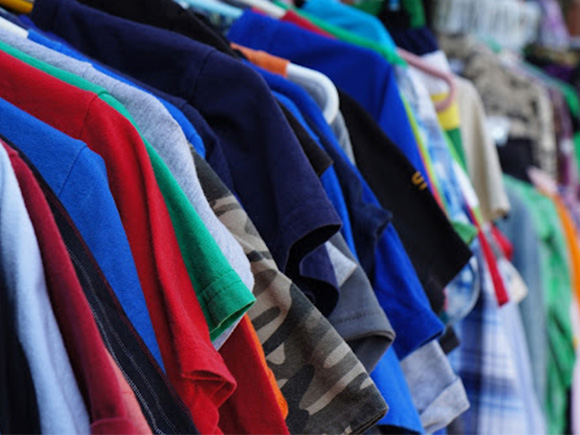
Source: Pixabay
The effect of the global second-hand market is (and will be) felt differently by the various players (the consumers, retailers, wholesalers, and importers/exporters) in the industry.
Consumers are one of the biggest beneficiaries of the second-hand clothing industry. Some of the benefits consumers enjoy from buying used clothes are cheap yet fashionable clothing, quality materials that last very long, and finally, an opportunity to help contribute positively to the environment’s sustainability.
For retailers and wholesalers alike, the growth of the global second-hand market means good business. The eradication of the stigma associated with wearing second-hand clothes hugely contributed to the normalcy and growth of the market, this means there will be an increased demand among consumers.
This, coupled with the fact that both retailers and wholesalers now have access to buy from reputable bale clothes suppliers that only supply first-grade second-hand clothing, will ensure that the predictions of experts about the used clothing market will become reality.
For importers and exporters, the benefits and perks of playing a part in the second-hand clothing industry are similar to that which were mentioned before. Expert projections of an explosive second-hand clothing market for the next five years portend an increased demand for used clothing.
What this means is that there will be increased import and export activities for the industry players. This makes it a good time to enter into trade partnership with a reputable second-hand clothing supplier and become part of this fast growing global market.
